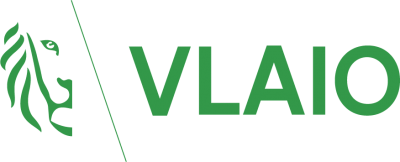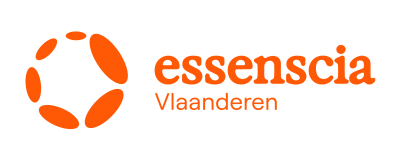Topics
We organise our actions in six thematic & strategic agendas:
Strategic Agendas:
Bio-economy
Circular Construction
Chemicals/Plastics
Manufacturing Industry
Food Chain
Water Cycles
Seven leverages provide additional support:
Leverage effects:
Lever Policy Instruments
Lever Circular Procurement
Lever Communication
Lever Innovation & Entrepreneurship
Lever Financing
Lever Jobs & Skills
Lever Research
What, why and how?
Why are we pursuing a circular economy?
Future visions 2050
How do we see our circular future?
About our management
Who steers what at Flanders Circular?
Circular professional textiles
All knowledge and communication on circular business textiles collected
Although circular (company) textiles are not in their infancy and there are already numerous initiatives at home and abroad, it remains important to make the knowledge and experience surrounding them even better known, to spread it and to evaluate it.
After all, the accessibility, availability and dissemination of existing initiatives is often still a major bottleneck. Companies do not always find the way to the different information websites, the available information is often too general, some initiatives have a too clear commercial approach ... In short, companies have an additional need for support through concrete and correct information, collected in one easily accessible place.
Therefore, Centexbel, the knowledge and innovation centre for the textile industry, wants to set up a new information and communication platform on circular textiles. It will allow for a broader dissemination of the circular economy principles, concrete and correct knowledge and experiences will be collected and shared at one place and existing initiatives will be evaluated and put in the spotlight.
Making such initiatives and information better known and correctly evaluated is a continuous task that directly contributes to the further implementation of circular economy. Ultimately, this project will also lead to more circular purchases and to a more local and sustainable production of (industrial) textiles.
The project can also serve as a basis for the development of a similar information and communication platform for other sustainable products.
Centexbel
Sectors
Themes
Organisations
Website
MOST IMPORTANT
RESULTS
- This platform centralises all correct, concrete and up-to-date information and communication on circularity in one easily accessible place, in contrast to the very fragmented situation at present.
- The various themes on the information platform are linked to separate forums. These will be set up based on suggestions from users and will be monitored by a host. From there, users can discuss certain themes in greater depth.
- The platform offers space for learning networks. There, users can come together in a structured way to exchange practical knowledge and experience. These networks can create a new dynamic and give rise to cross-fertilisation.
- The platform includes a series of databases of relevant partners, companies, organisations, etc. This way, users have a clear overview of the stakeholders involved, which is useful for making contacts and further networking.
MOST IMPORTANT
LESSONS LEARNED
- At home and abroad, initiatives on circular textiles, recycled materials, new business models, etc. are mushrooming. Unfortunately, many untruths are also being preached: greenwashing and 'fake news' are the order of the day these days. A critical evaluation of all these initiatives is essential.
- The structure, form and accessibility of the platform play an important role in achieving our objectives. The information must not only be correct, but also easy to find and intuitive to use. An accessible form and visualisation are of great importance.
- The platform should preferably not be linked to a commercial organisation, but rather to an authority on business textiles. This will ensure more objective content and make the platform more reliable. An existing initiative with a known reach across the entire textile chain would be interesting.
- The world around us changes very quickly. An important success factor for the platform is that the content offered is continuously updated and supplemented with up-to-date information, and that it is also evaluated for relevance, completeness and scientific correctness.

















